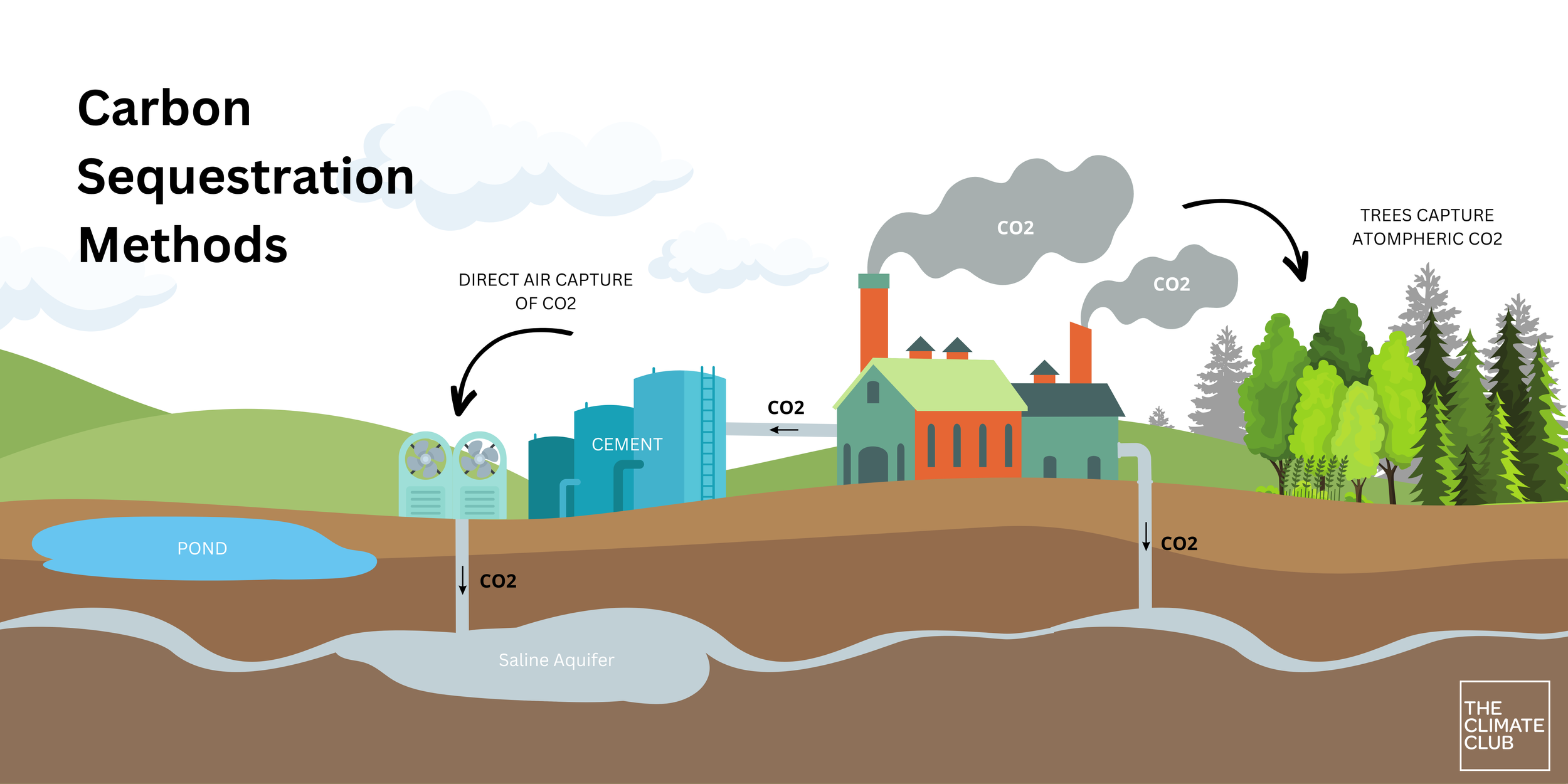Carbon Sequestration Methods for Reducing Climate Change
Our reliance on fossil fuels for transportation, electricity generation, and industry makes carbon dioxide (CO2) the most emitted greenhouse gas warming our planet. Although CO2 occurs naturally in the atmosphere, human activities have caused a 50% increase in its concentration in the last 200 years. Apart from the atmosphere, carbon is also stored in water, vegetation, soils, and other carbon sinks as it is continually recycled within Earth’s systems. The natural process by which CO2 is removed from the atmosphere and subsequently stored as a solid or liquid in other systems is called carbon sequestration.
Considering the risks associated with the rising levels of greenhouse gasses, enhancing carbon sequestration is seen as an essential method for limiting the abundance of CO2 in the atmosphere. A straightforward method to promote carbon sequestration is reforestation. Globally, forests absorb about 2.6 billion tons of CO2 annually, storing twice as much carbon as they emit. Reforestation is a relatively inexpensive and effective way to promote the removal of CO2 from the atmosphere. However, competing land uses must also be considered, which can restrict the availability of areas suitable for reforestation.
Another major carbon sink is soils, which collectively store, or sequester, vast amounts of carbon in the form of organic matter, such as plant residues. Globally, it is estimated that soils have lost 50 to 70% of their carbon content since the start of their cultivation. Whether agricultural soils store or release carbon to the atmosphere depends on how they are managed and cultivated by farmers, making this method of carbon sequestration socially and economically challenging. However, there is much to gain by returning this lost carbon back into the soil.
Apart from these biological methods of sequestering carbon, performing carbon sequestration through technological means is increasingly prominent. Carbon capture, utilization, and storage (CCUS) is a method used to capture emissions directly from sources where they are emitted, such as power plants. If it is not reused, the captured carbon is then compressed into a liquid state and injected into rock formations underground for long-term storage. CCUS technologies are still costly and limited in scale; however, there is a significant amount of underground storage capacity available worldwide.
It is important to note that as much as 45% of CO2 emissions have not been sequestered and remain in the atmosphere. Our emissions substantially outpace carbon sequestration, and reducing emissions is critical. Therefore, while investing in greater carbon sequestration can help mitigate the effects of climate change, it is only one part of a solution on the path to carbon neutrality.

